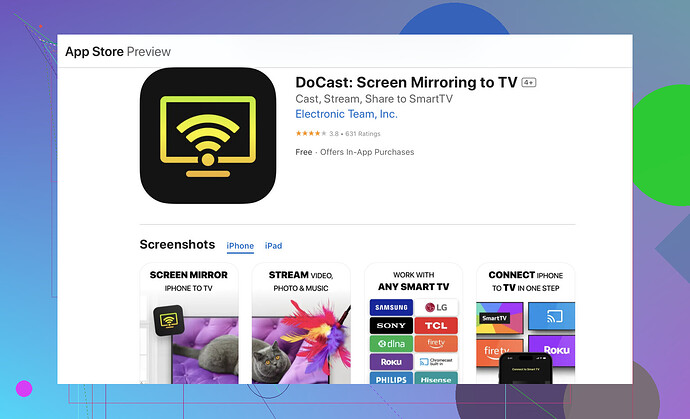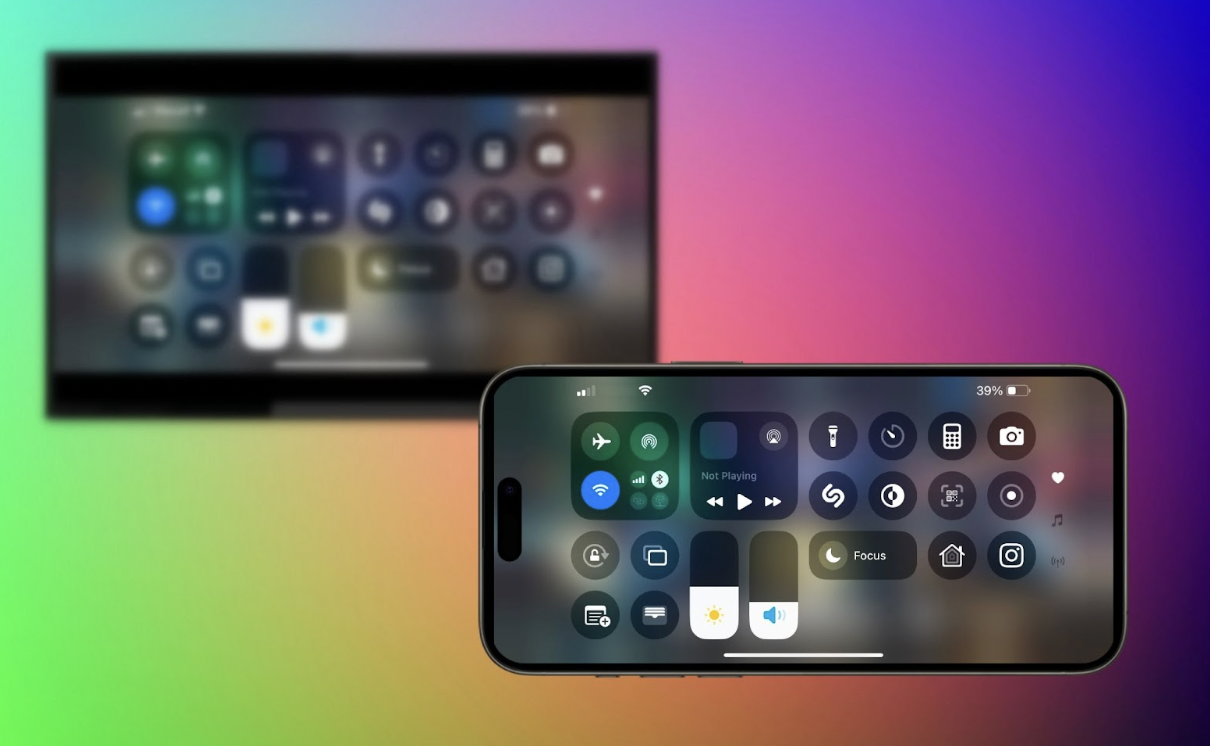I’m trying to connect my iPhone to a Samsung Smart TV to mirror my screen, but I can’t seem to figure out the steps. I’ve tried using AirPlay, but it doesn’t seem to be working. Any advice or alternate methods would be appreciated as I need this for a presentation.
Absolutely — you can connect your iPhone to a Samsung Smart TV, but the method depends on your TV model and its AirPlay compatibility. Here’s a breakdown of how to do it, plus what to try if AirPlay isn’t working.
If AirPlay isn’t working between your iPhone and Samsung Smart TV, it’s often due to a simple setting or network issue. Try the following:
- Check Wi-Fi Connection
Make sure both your iPhone and your Samsung TV are connected to the same Wi-Fi network. AirPlay won’t work across different networks or hotspots. - Restart Devices
Reboot both your iPhone and your Samsung TV. Sometimes a fresh connection clears up hidden glitches. - Enable AirPlay on Your Samsung TV
Go to:
Settings > General > Apple AirPlay Settings
- Turn AirPlay = ON
- Set Require Code = First Time Only (or “Every Time” if you prefer)
- Update TV Firmware
Outdated firmware may cause AirPlay to misbehave.
If AirPlay is still giving you grief, you might want to try using the DoCast app. This app simplifies the process of mirroring your iPhone screen to your Samsung Smart TV. I’ve found it to be quite user-friendly and reliable when AirPlay decides to be finicky.
Steps to use the DoCast app:
- Download and install the DoCast app from the App Store.
- Connect your iPhone and Samsung TV to the same Wi-Fi network.
- Open the DoCast app and follow the on-screen instructions to start mirroring.
This should get you up and running in no time. If you’re still facing issues, another workaround is using an HDMI adapter to connect your iPhone directly to the TV. It’s less elegant, sure, but it’s a foolproof way to mirror your screen.
Step-by-Step Instructions:
- Plug the adapter into your iPhone’s Lightning port.
- Then connect the other end of the HDMI cable to an open HDMI port on your Samsung TV.
- On your Samsung remote, press
SourceorInput, then select the correct HDMI port you just used. - You’ll immediately see your iPhone screen on the TV. No extra setup or apps needed.
Conclusion
If AirPlay isn’t working or your Samsung TV doesn’t support it, using a Lightning to HDMI adapter is one of the easiest and most reliable ways to mirror your iPhone screen. It works without Wi-Fi, delivers stable audio and video, and requires no apps.
Alternatively, if you’d rather stay wireless and your TV supports it, DoCast is a great app for screen mirroring. It offers a smooth, user-friendly experience and can work with many Smart TVs.
For more detailed steps and tips on connecting an iPhone to a Samsung Smart TV, check out this comprehensive guide.
Hey, dealing with AirPlay issues can be a real headache. First off, ensure your iPhone and Samsung Smart TV are on the same Wi-Fi network and updated to the latest software versions. If that doesn’t work, besides the DoCast app, here are a few alternative methods you might find useful:
Use Smart View:
Some Samsung Smart TVs come with a built-in feature called Smart View that you can use to mirror your iPhone:
- Download the Smart View app from the App Store on your iPhone.
- Connect your iPhone and Samsung TV to the same Wi-Fi network.
- Open the Smart View app and select your Samsung TV from the list of available devices.
Use a Lightning to HDMI Adapter:
Another foolproof way to mirror your iPhone screen is by using a Lightning to HDMI adapter:
- Purchase a Lightning to HDMI adapter, such as Apple’s official adapter.
- Connect the adapter to your iPhone and then connect an HDMI cable to the adapter.
- Connect the other end of the HDMI cable to an available HDMI input on your Samsung TV.
- Switch your TV’s input to the corresponding HDMI port.
Samsung SmartThings App:
Samsung offers another app called SmartThings, which can also help with screen mirroring:
- Install the Samsung SmartThings app from the App Store.
- Connect your iPhone and TV to the same Wi-Fi network.
- Open the SmartThings app and add your Samsung TV as a new device.
- Follow the on-screen instructions to complete the setup.
Check TV Settings:
If AirPlay still isn’t cooperating, it might be worth checking your TV’s settings:
- On your Samsung TV, go to Settings > General > AirPlay Settings.
- Ensure that AirPlay is turned on and that the TV is set to allow connections.
If you’re having consistent issues, sometimes the simplest solutions are the best, like using a straightforward Lightning to HDMI adapter. Always a reliable backup!
Alright, you’ve tried AirPlay, but it’s being pesky. Let’s switch gears. One simple route is the Google Home app.
Google Home App:
- Install the Google Home app on your iPhone.
- Connect your devices to the same Wi-Fi network.
- Open the app, and follow instructions to link your TV.
Pros of DoCast app: Simple UI, reliable connections.
Cons: Might require a paid version for all features.
Using Google Home adds extra functionality beyond mirroring, like smart home controls, if you’re into that.
Another Option: Roku Stick
If you own a Roku stick or TV:
- Install the Roku app on your iPhone.
- Use Screen Mirroring within the app.
Why not try Miracast devices?
For non-tech geeks, it’s a budget-friendly alternative:
- Plug the Miracast adapter into an HDMI port on your TV.
- Connect via Wi-Fi and mirror away.
A little tech-savvy? Dive deep with SmartThings.
Pro Tip: Sometimes, router settings muck things up. Ensure multicast and associated features are enabled.
Quick Troubleshoot Checklist:
- Update Firmware on both devices.
- Reset Network Settings on iPhone.
- Reboot your Router.
Ultimately, AirPlay can be finicky, but exploring apps like DoCast or alternatives like Google Home or Miracast devices provides versatility.
Happy streaming!


